Trends in hygiene care from 2008-2015
This article will focus on these care providers and the value they bring to the dental practice. Data includes hygienist gross revenue, net revenue compared to scheduled production and number of patients seen monthly. Trends are measured over the last eight years to give a comprehensive look at the hygienist’s role in the dental practice.
Hygienists are key team members in oral patient care. They have many opportunities to interact with the patients, deliver excellent service and bring in revenue to the organization.
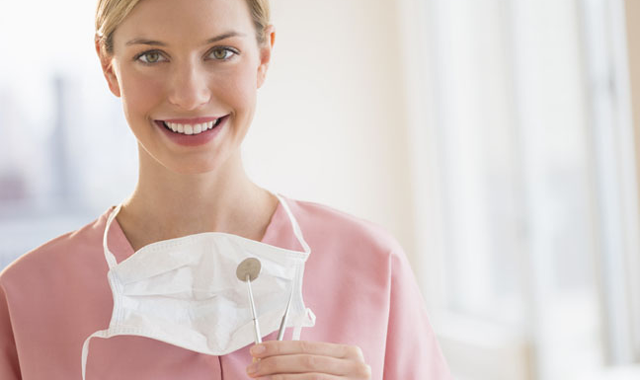
This article will focus on these care providers and the value they bring to the dental practice. Data includes hygienist gross revenue, net revenue compared to scheduled production and number of patients seen monthly. Trends are measured over the last eight years to give a comprehensive look at the hygienist’s role in the dental practice.
More from Sikka Software: The latest revenue data for dental practices across the nation
Sikka Software collects data from thousands of practices across the United States. Data is HIPAA and HITECH compliant and is free of any practice or patient information. The data allows unprecedented insight into dental private practices for benchmarking. Oral health providers can learn more about optimizing their dental office by visiting www.sikkasoftware.com.
Continue to the next page to see the trends...

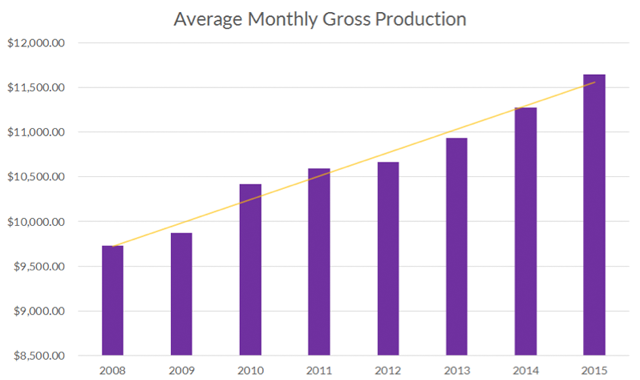


Hygiene gross revenue
Hygienists have played an increasingly important role in bringing in revenue to the practice. In 2008, they brought in a monthly average of $9,728.73, and by the end of 2015 they were bringing in $11,648.43. This is an 19.7 percent increase in revenue over the previous eight years. Possible reasons for this change include increases in dental fees, reflecting the rising cost of performing business, as well as increases demand for hygienist services.
More from Sikka Software: The latest fee data for 18 popular procedure codes
According to the Best Jobs rankings from U.S. News & World Report, the job market for hygienists is expected to grow 19 percent by 2024. They report that this above-average growth is likely due to an increased awareness of the relationship between oral and general health driving demand for regular care.
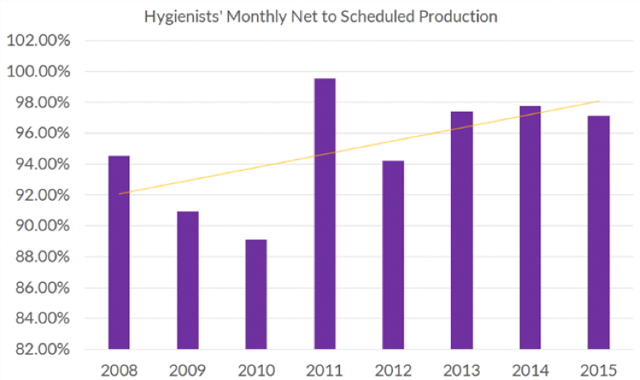


Net to scheduled production
A good indicator of success is whether patients are showing up to hygienist appointments and if they are receiving the treatment they need for oral health. Booking more same-day treatment, when possible, and minimizing no shows both increase revenue, with the goal of making as much money as was scheduled for the day, if not more. This requires the team to stay busy, manage patient no shows and find time to fit in appointments during unscheduled openings. All of these motions significantly impact the bottom line of a practice.
More from Alitta Boechler: Dental benefits: Use them or lose them
The success of these metrics is measured in net production as a percentage of scheduled production, or what a practice actually made compared to what they thought they were going to make. The closer to 100 percent this ratio is, the more effective a hygienist and, by extension, the practice is at managing patient flow. Hygienists can even, in some cases, exceed this ratio by fitting in appointments or procedures as needed, providing same day service.
Trends indicate that starting in 2011, practices and hygienists have become more efficient at managing this ratio. This may be because hygienists and practices are using optimization tools to track key metrics on patient no shows, production and other important practice data. Knowledge about how the practice is performing, over time and compared to national benchmarks allow for practices to address concerns and make changes that facilitate growth and market competitiveness.
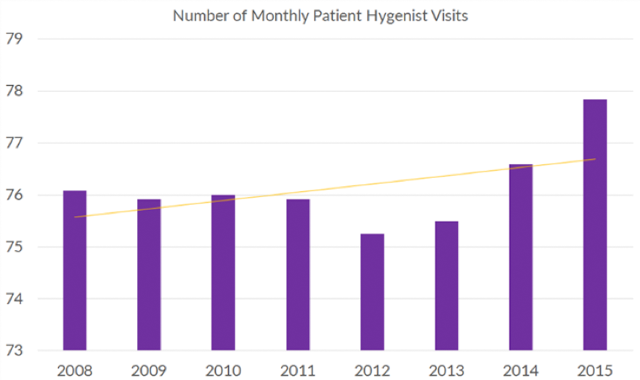


Number of patient visits
Hygienists are seeing slightly more patients per month. This helps to increase gross revenue and clinical efficacy, as discussed with the previous two graphs. Although this is a relatively small number per clinic per month, on a national scale, this indicates that many more patients are being seen by hygienists: a win-win for the patients and the dental industry.
More from Sikka Software: Exploring average patient cost per practice
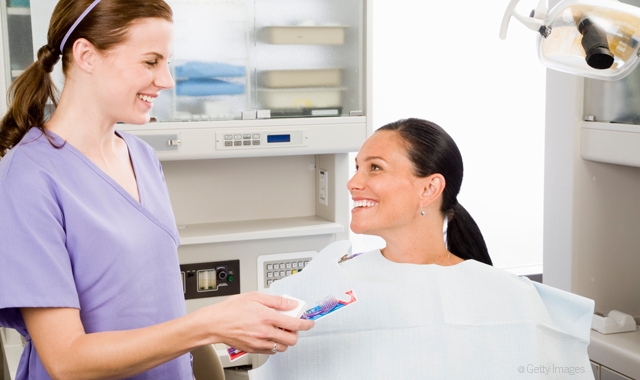

Conclusion
Hygienists are seeing more patients, are increasingly efficient and are bringing in more revenue to dental practices. They are important players in oral healthcare and their effectiveness as care providers reflects this. Oral healthcare is in demand and hygienists are providing the necessary care to keep mouths healthy and assist in providing treatment.
Trending article: 5 interesting questions dental hygieniests have asked Kara RDH in March
How hygienists and practices answer the growing demand in future years will define each practice’s ability to serve their community and grow their practice. Already, success is seen in increasing the ratio of net to scheduled production, however, there are many areas of managing clinical flow and finances that can improve bottom line revenue while maintaining outstanding patient care.
More from Alitta Boechler: 5 things to remember when making changes
Practice Optimizer is an app from Sikka Software that helps manage the dental practice, so professionals can spend less time worrying about numbers and more time in the clinic with their patients. The app connects with 96 percent of practice management systems and is a 360 degree look at the financial and practice performance data. Data includes, fee optimization, daily and monthly reports, marketing return on investment, and helps fill sudden, unexpected schedule gaps. Oral health professionals can learn more by clicking here.
Editor's note: Data analysis for this article by Nilesh Malpeddi
How Dentists Can Help Patients Navigate Unforeseen Dental Care
December 12th 2024Practices must equip patients with treatment information and discuss potential financing options before unexpected dental treatments become too big of an obstacle and to help them avoid the risk of more costly and invasive procedures in the future.
Floss and Flip Flops Episode 13: The Focal Point of Infection
January 10th 2023The Sanders Sisters jump into 2023 with a discussion of the many conditions that display some of their earliest symptoms in the oral environment, and all the ways this can connect to systemic issues that can become serious health challenges for patients.
Floss & Flip Flops Episode 12: The 12 Medical Conditions of Concern…and a Partridge in a Pear Tree
December 2nd 2022Join the Sanders Sisters as they welcome the holidays and the last episode of their first season of Floss & FlipFlops! In this episode, the sisters discuss the 12 medical conditions on Santa’s list that can indicate a bigger systemic complication, and how you can integrate your knowledge of these conditions in helping your patients achieve lifelong health!